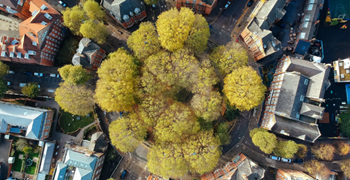04/08/2021
Does Home Insurance Cover Roof Leaks?
The prospect of a roof leak – and the associated costs and disruption – is a natural concern for many homeowners. In this article, Personal Lines Scheme Manager Carly Nineham answers the question: ‘Does Home Insurance cover roof leaks?’
To answer the main question, yes, most Buildings Insurance policies do cover roof leaks unless specifically excluded in the terms and conditions. Your Contents Insurance may also protect your personal items within the property, such as furniture, clothing and technology.
It’s important to note that Home Insurance usually only covers roof leaks caused by sudden events, such as storms and heavy rain. If the roof leak is the result of poor maintenance or wear and tear – and therefore could have been prevented – your insurer may not pay the claim.
Leaking Flat Roofs
Before we move onto the process of making a claim for a roof leak, we should pause to mention homes with flat roofs.
When you arrange your Home Insurance, you tend to be asked what proportion of your home has a flat roof. If the roof has a pitch under 10 degrees, it is considered flat.
Brokers and insurers ask this because flat-roofed properties tend to be more at risk of claims. One reason for this is that rain doesn’t run off a flat roof in the same way as it does from a pitched roof. This may result in sitting water or ice on the roof, which increases the risk of property damage and claims. As a result, you may pay more for your Home Insurance if more than 30% of your roof is flat.
Roof Leaks at Flats
If you live in a flat and suffer a roof leak, your insurance cover will depend on whether you’re a tenant, leaseholder or freeholder.
If you’re a freeholder – or share the freehold – you’re likely to be responsible for the fabric of the building, including the roof. If there was a roof leak, your Buildings Insurance is likely to cover the claim (providing it’s not due to wear and tear).
If you’re a tenant or leaseholder, however, you probably won’t have responsibility for the fabric of the building. Given that, you’re only likely to have Contents Insurance. This will cover the cost of any damage to your personal items caused by a roof leak. Your landlord/freeholder will be responsible for repairs to the roof, walls and ceilings.
Claiming on House Insurance for a Water Leak
Claiming on your Home Insurance for a roof leak doesn’t need to be complicated. Check your insurance documents to ensure you’re following the correct procedure, but the typical steps for a claim are as follows:
- Contact your insurance broker or insurer to notify them of the claim as soon as possible. They’ll advise you on the next steps.
- Document as much as possible. Take photos of internal and external damage, both to the roof and your possessions and send them to your claims contact.
- Seek quotations for repairs and replacements.
- Submit your quotations to your broker or insurer.
- Arrange for the work to commence.
- Once complete, send the invoices to your broker or insurer and payment for repairs and replacement items will be arranged.
Roof Leak Cost
The cost to repair a roof varies depending on your property, but it’s typically more expensive to fix after a leak, so prevention is always better than cure – especially if the leak isn’t covered by your insurance!
The size of your roof, its construction and the materials will have an impact on the roof leak repair cost. Plus, the repairs needed and where they’re needed will affect the final price. Scaffolding may be required, which has an added cost associated with it. And if you have multiple levels of roof this may also require extra work. It’s important to keep all of these in mind when weighing up the cost.
Given all of the factors involved, always seek multiple quotes before engaging a roof repair.
Preventing Roof Leaks
It’s typically more cost-effective to maintain the condition of your roof than paying for repairs. Here are some tips to help:
- Inspect your roof regularly – both from the street and up close. For safety, consider asking a local roofer to take a regular look. Missing or slipped tiles and damaged flashing need to be repaired as quickly as possible.
- Check your loft and attic spaces for leaks, damp and light coming in from outside.
- Clear your gutters so they don’t overflow.
- Keep air bricks and roof ventilation clear so the roof cavity stays dry.
- Where possible, keep trees and plants away from the roof so that debris doesn’t fall and damage it or try to get inside, causing tiles to move. It also means the roof gets access to sunlight, reducing the chances of moss and algae growth, which can damage your roof.
Find out more about Home Insurance
Contact the Personal Lines team on 01223 792265 to find out more about protecting your home against leaks today.
Related Articles





